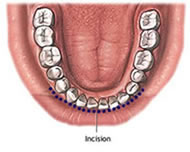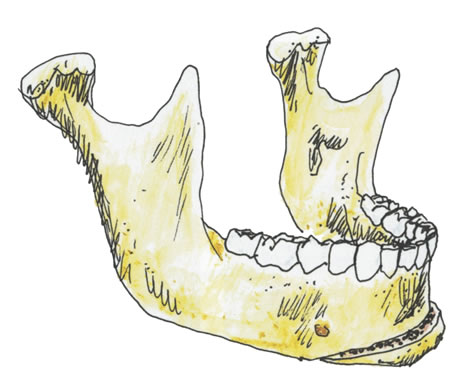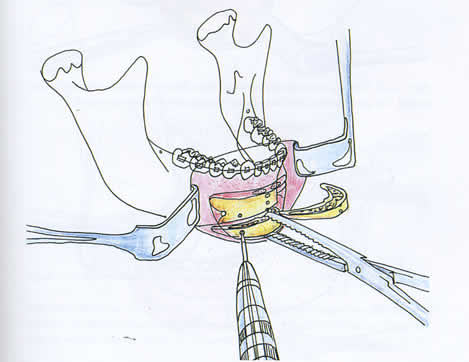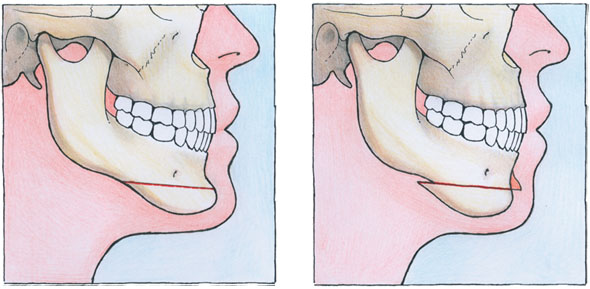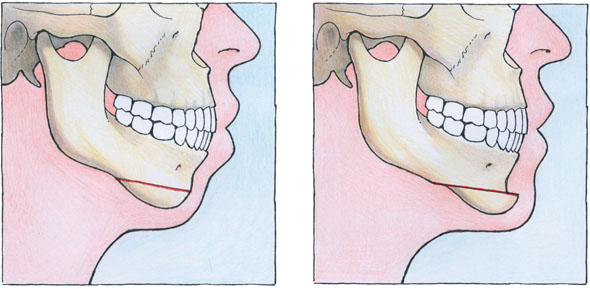Chin surgery
Table of contents:
The chin varies widely between males and females, so it can be extremely important in gender recognition. Chin recontouring is often combined with a jaw reduction and is seen as an important part of Facial Feminization Surgery.
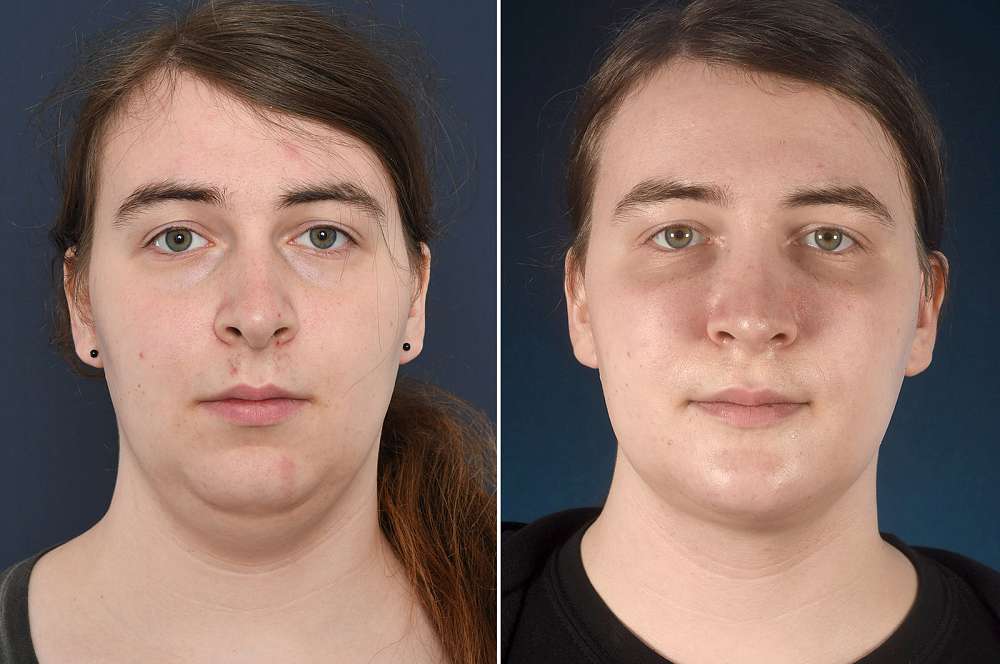



















Gender of the chin
Female chins tend to merge together toward the center of the chin. Men’s tend to have two points directly below the canine teeth and a flat part between the points. This makes men’s chins look fuller and more square. Women’s tend to be more tapered.
Male chins also tend to have more vertical height, with more space between the lower lip and the base of the chin.
In some cases, male chins have a vertical crease in the middle, usually known as 'cleft chin', something that is highly unlikely for women.
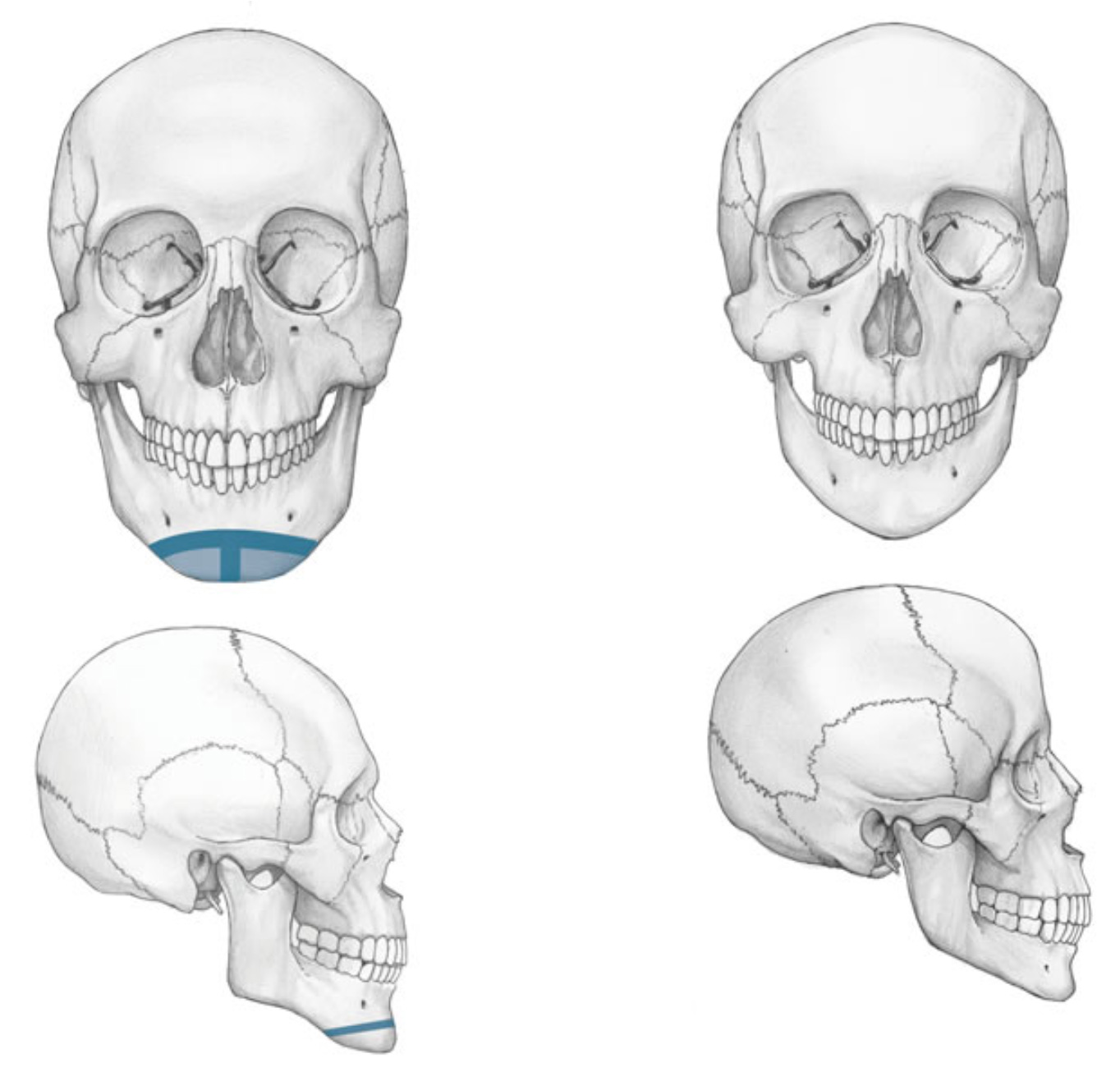
Male chin
| Female chin
|
Chin and facial harmony
While tastes do differ, there are a number of guidelines as to what the characteristics are of an aesthetically pleasing face. In profile view, the face should have a slight degree of convexity. With this we mean it should have a specific angle.
The profile of a patient can be significantly altered with a genioplasty (chin recontouring surgery). This, in turn, has a significant effect on overall facial harmony.
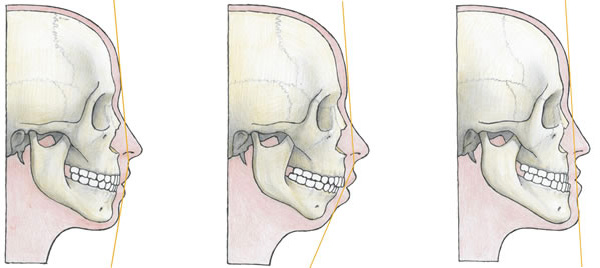 Ideal facial angle (left) - Facial angle too small (center) - Facial angle too prominent (right)
Ideal facial angle (left) - Facial angle too small (center) - Facial angle too prominent (right)
Feminizing the chin
Luckily, the chin is an area whose features can all be modified: height, width and if necessary even projection. It is possible to make various modifications to a chin depending on the individual anatomy of each patient, and the desired result. This chin recontouring surgery is called a “sliding genioplasty”.
Procedure
- General anesthesia.
- Incision—Incisions are all made intraorally, so there will be no scars visible on the outside.
- Sawing—The chin is cut from back to front on both sides with a saw, separating a horseshoe-shape of bone.
- Height reduction—A second cut can be made parallel to and a few millimeters from the first one, and a slice of bone can be removed.
- Width reduction—The middle part of the horseshoe-shaped bone can be removed to make the chin more pointed.
- Chin advancement or setback—The final position of the piece of bone is chosen. At this point, the chin can be moved forward or backward.
- Fixation—The bone parts are fixed using titanium mini plates and screws, which will never be removed.
- Suturing—The wound is closed with self-dissolving stitches.
Recovery
- Hospitalization—Most patients will spend one night in the hospital after their surgery.
- Compression Bandage—A bandage will be put over the chin to reduce hematoma. It can be removed the next day.
- Swelling—The swelling is comparable to the swelling after jaw surgery.
- Numbness—Most patients experience temporary numbness.
- Work and sports—If you don’t mind being seen with the swelling, you may be able to return to your social activities 7 to 10 days after the surgery. You will have to wait until the fourth week before doing any hard work or physical exercise.
Complications
- Infection—Infections are possible but rare.
- Numbness—Partial numbness of part of the jaw because of mental nerve damage is rare but possible.
- Asymmetry—Even though the surgeon is very careful marking the areas he is going to operate, there may be asymmetries. They can always be corrected afterward.
Frequently asked questions
What does this procedure cost?
You can find estimated prices here, after your consultation you will be informed of the exact prices of your operation. Prices are average and may vary depending on the exact treatment.
There are 3 options to receive a financial and operative proposal. You can either send us pictures and receive a quote and an FFS simulation, or you can book a Skype or a live consultation with Dr Bart van de Ven during which you will also receive a quote and FFS simulation. Click here if you want to get a general idea of FFS prices.
What happens if there are complications after the procedure and is this covered?
We will correct the complication if surgically possible, without charging any surgical fees. Hospital, material and traveling costs are for the expense of the patient.
Can I get this surgery if I’m a cis woman?
Yes, of course. We perform Facial Feminization Surgery on all women. Every woman is welcome at our clinic!
How long does it take for the final result to be visible and the bruises to disappear completely?
Recovery looks different for every patient, but bruising usually disappears after two to four weeks. The final result can be visible after a few months, but it may also take longer than a year. All information on recovering from FFS can be found on our recovery page.
What happens with the stitches in my mouth?
They dissolve on their own in 5–7 weeks. They don’t have to be removed. If they would still be in your mouth after 7 weeks, you can easily remove them just by pulling on them, as they will immediately break due to the fact they will be mostly dissolved already.
When can I go back to a tanning bed after a chin and/or jaw recontouring
When all bruises have completely disappeared, after about 3 weeks approximately.
Can a chinplasty or jaw recountouring be performed when you have dental implants in that region?
Dental implants normally have a maximum length of 14mm. Natural teeth are longer. That’s why dental implants never create problems during a chinplasty or jaw recontouring.
Can dental implants still be inserted after a recontouring of jaw and chin?
The removal of bone will be done at the lower border of the jaw, far away from the teeth. So dental implants can be inserted after just as before.
Will I be able to eat?
If you haven’t had any treatment involving your teeth, a sliding genioplasty or orthognathic surgery, you’ll be able to eat normally quite soon. Due to the effects of general anesthesia, you should only feel nausea for the first few hours. You may prefer to eat softer or pureed foods initially if you have intra-oral sutures. Our catering service provides foods that are easy to ingest, to help you with that. After a sliding genioplasty, you should be very careful not to put too much force on the lower jaw e.g. by eating raw meat (steak) or by biting an apple. This should be avoided. The jaw is really weak in the chin area and it will take about 6 weeks until it has regained its original strength.
How many mm can the chin be put forward?
The maximum amount a chin can be put forward is about 8-10mm. But if you need this much, it’s probably the whole underjaw that is too far back, and you probably need orthognathic surgery.
With a chin height reduction is there significant sagging of the skin around the chin?
Of course there will be relatively more skin around the chin after a bony reduction of the chin. A hanging chin can however be avoided by meticulous suturing of the muscles of the chin and by wearing the facemask (for 1 week) that Dr van de Ven will provide you with after the surgery. The facemask gives strong upward support to the chin. If in spite of these measures, the skin is still sagging around the jaw and chin (this happens mostly in older patients with less elastic skin) one of the 3 types of facelifts that Dr van de Ven performs can bring the solution.
If I get a chin reduction, what will happen to the muscles? Will they be detached and repositioned?
The muscles on the outside of the chin will be detached before the chin bone reduction. After the surgery, the face mask that you will wear will push the muscles right back in position so they heal back to the bone.
Is it possible for the lower lip to move upwards after a chin height reduction? Does the smile change?
Yes, if you reduce the height of the chin and you suture the muscle well, the lower lip moves upwards.
How can I expect the feeling in my chin and lower lip to be after a chinplasty?
After a chinplasty, the feeling in the lower lip and chin is always disturbed. If the mental nerve (that comes out of the jawbone just behind the chin and then runs into the lower lip and skin of the chin) has not been ruptured during the surgery, for sure sensitivity will come back. It is not possible however to predict when and to which extent. Mostly the recovery will take between several weeks and several months but it can take up to even 2 years. It is normal that the sensitivity of the lower lip and chin doesn’t recover completely. If the mental nerve has been ruptured (in the hands of Dr Bart van de Ven less than 1%) it can be sutured. Of course, the prognosis will then be worse. Damage to the mental nerve will however not be visible to the outside world as it is a 100% sensory nerve. It doesn’t contain motor branches so the function of any muscle remains intact.
What about smoking?
As smoking counteracts wound healing we strongly advise against smoking during the 3 weeks before surgery until 3 weeks after surgery. Smoking dramatically increases the risk of skin necrosis and should be avoided at all times.
We are doing our very best to keep this information up-to-date. In case you see anything that no longer seems accurate, or in case you have a question, please fill out the form below!

